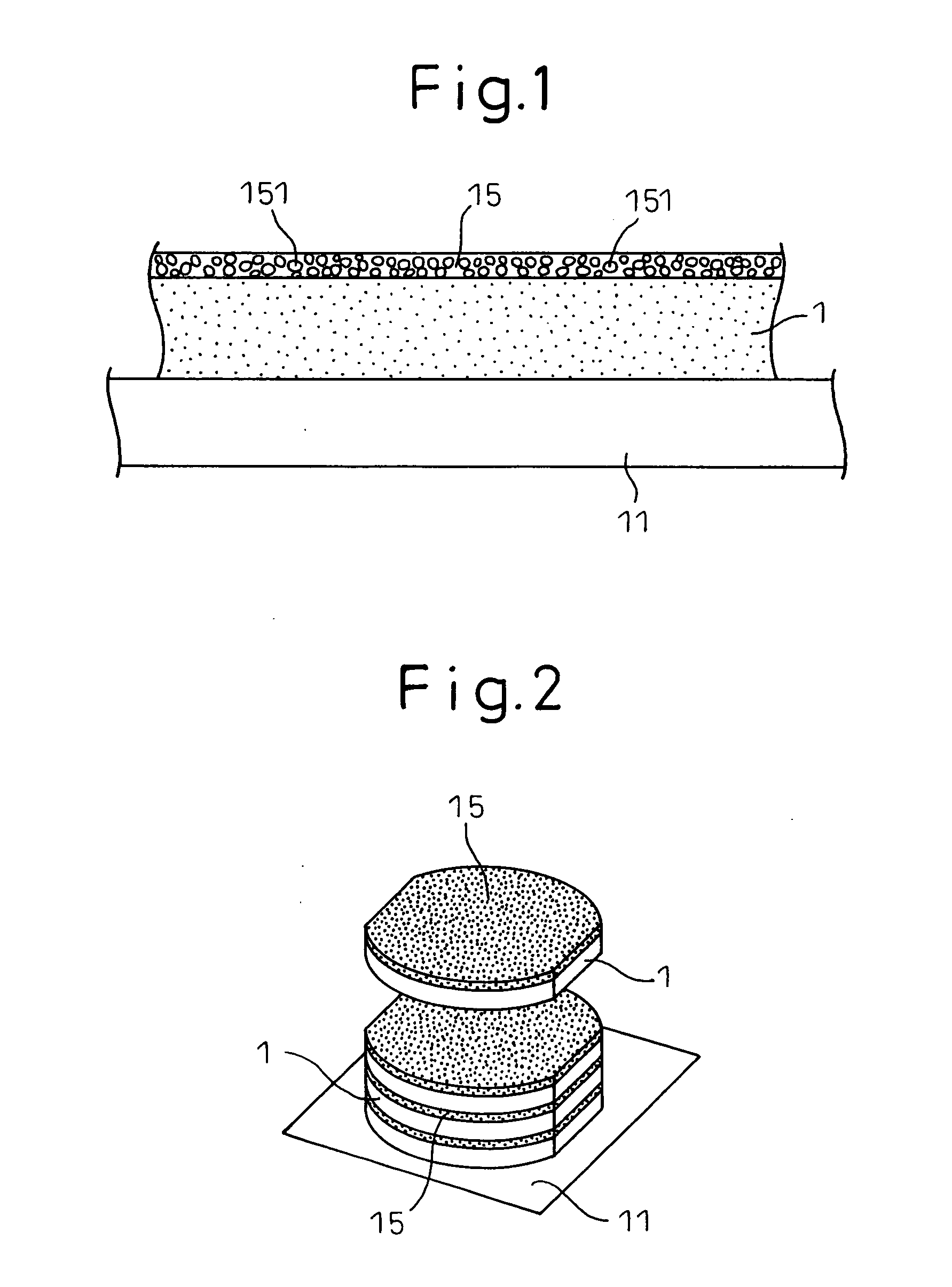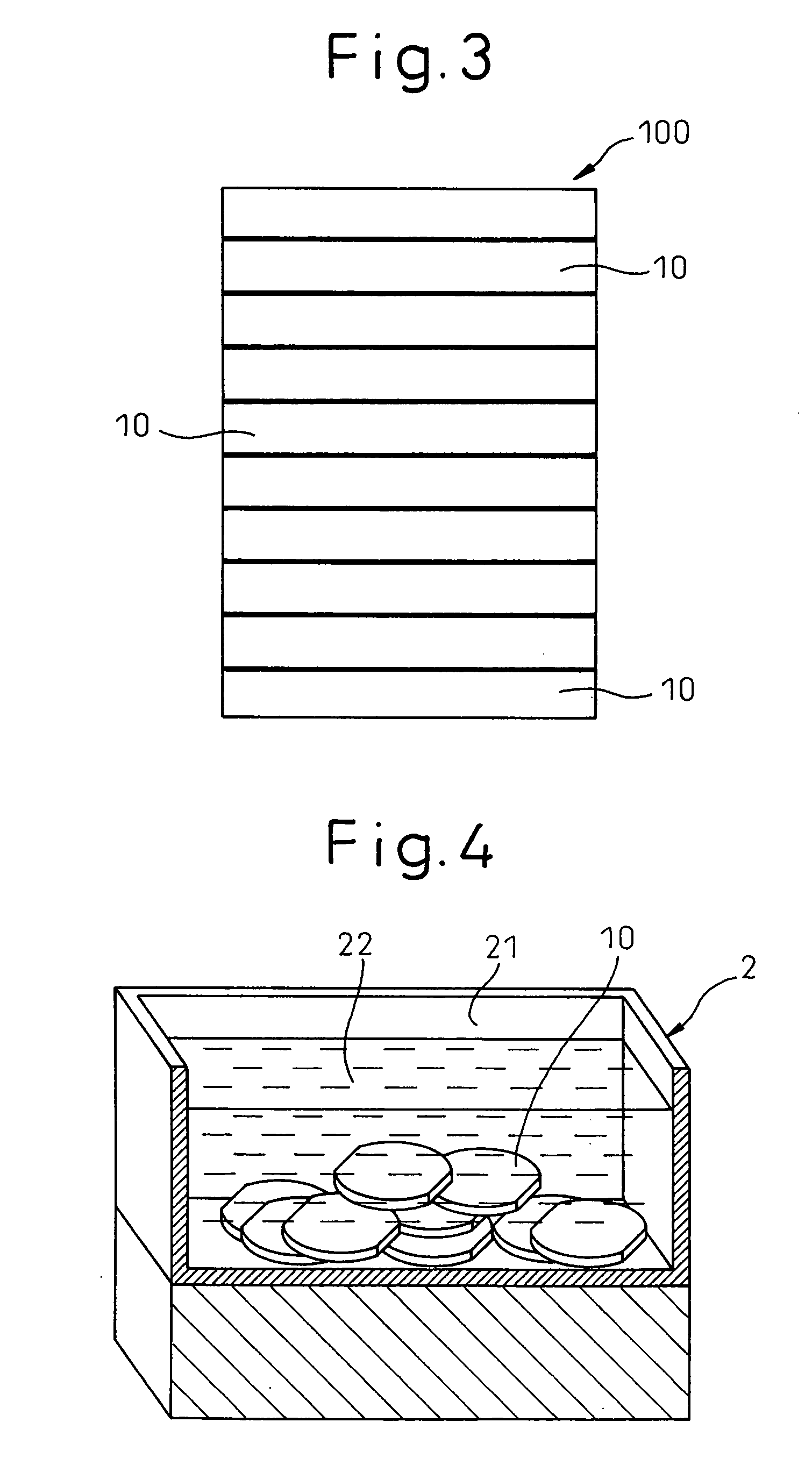Methods of manufacturing a crystal-oriented ceramic and of manufacturing a ceramic laminate
a technology of crystal-oriented ceramics and manufacturing methods, which is applied in the direction of semiconductor/solid-state device manufacturing, basic electric elements, electric apparatus, etc., can solve the problems of unobtainable piezoelectric properties, difficulty in uniform dispersibility, and inability to uniformly disperse seed crystals, etc., to achieve excellent orientation degree, shorten the calcining time, and improve the effect of calcination efficiency
- Summary
- Abstract
- Description
- Claims
- Application Information
AI Technical Summary
Benefits of technology
Problems solved by technology
Method used
Image
Examples
example 1
[0119] Next, an example according to the present invention is further explained using FIGS. 1-7.
[0120] In this Example, crystal-oriented ceramics are manufactured, which are composed of a polycrystalline substance comprising a perovskite structure (ABO3) as the main component, and in which a crystal plane of each of the crystal grains constituting the polycrystalline substance is oriented.
[0121] In this Example, a sheet-making step, a crystallization-promoting layer-forming step and a calcining step are performed. At the sheet-making step, as shown in FIG. 1, a green sheet 1 composed of a piezoelectric material, which forms the polycrystalline substance of the perovskite structure, is made by calcining.
[0122] At the crystallization-promoting layer-forming step, as shown the same Figure, a crystallization-promoting layer 15 comprising crystallization-promoting material particles 151, which allow crystal grains in the polycrystalline substance to grow during calcining, is formed so...
example 2
[0147] This Example is an example of making crystal-oriented ceramics by forming a crystallization-promoting layer on a green sheet containing template particles.
[0148] The crystal-oriented ceramics in this Example are composed of a polycrystalline substance comprising a compound of a perovskite structure {Li0.04(K0.5Na0.5)0.96} (Nb0.86Ta0.1Sb0.04)O3 as a main component, are in the form of a plate, and have the form of a barrel with an area of 52 mm2 (a diameter of 8.5 mm) and a thickness of 80 μm, like in Example 1.
[0149] Details of the method of manufacturing the crystal-oriented ceramics in this Example are described as follows, by using FIGS. 8-15.
[0150] Initially, template particles, which were composed of a perovskite-type compound, and in which a crystal plane, having lattice coherency with a specific crystal plane (orientation plane) of a polycrystalline substance of crystal-oriented ceramics to be made was oriented, and a piezoelectric material were prepared. As the temp...
example 3
[0166] In Example 1 and Example 2, the crystal-oriented ceramics were made by forming the crystallization-promoting layer on the green sheet. This Example is one where crystal-oriented ceramics are made by forming a crystallization-promoting layer between green sheets.
[0167] Concretely, two green sheets with a thickness of 100 μm were made by utilizing slurry, in the same manner as in Example 1.
[0168] Then, particles (with an average diameter of 0.8 μm) composed of MgO2 as crystallization-promoting material particles were dispersed in slurry which had been utilized for the green sheet, and as shown in FIG. 16, a crystallization-promoting layer 15 was formed by applying the slurry at a thickness of about 10μm on one of the green sheets 12. After that, the other green sheet 13 was stacked on the crystallization-promoting layer 15 to make a three-layered green sheet 1. As shown in the same Figure, the crystallization-promoting layer 15 of this Example contains a piezoelectric materia...
PUM
| Property | Measurement | Unit |
|---|---|---|
| diameter | aaaaa | aaaaa |
| diameter | aaaaa | aaaaa |
| temperature | aaaaa | aaaaa |
Abstract
Description
Claims
Application Information
 Login to View More
Login to View More - R&D
- Intellectual Property
- Life Sciences
- Materials
- Tech Scout
- Unparalleled Data Quality
- Higher Quality Content
- 60% Fewer Hallucinations
Browse by: Latest US Patents, China's latest patents, Technical Efficacy Thesaurus, Application Domain, Technology Topic, Popular Technical Reports.
© 2025 PatSnap. All rights reserved.Legal|Privacy policy|Modern Slavery Act Transparency Statement|Sitemap|About US| Contact US: help@patsnap.com



